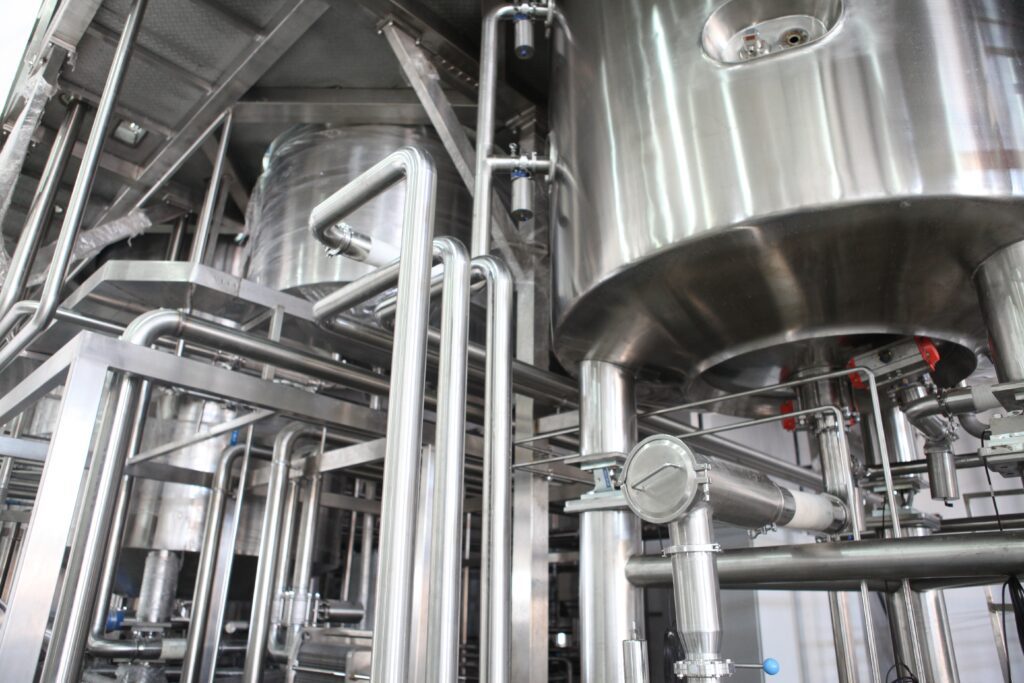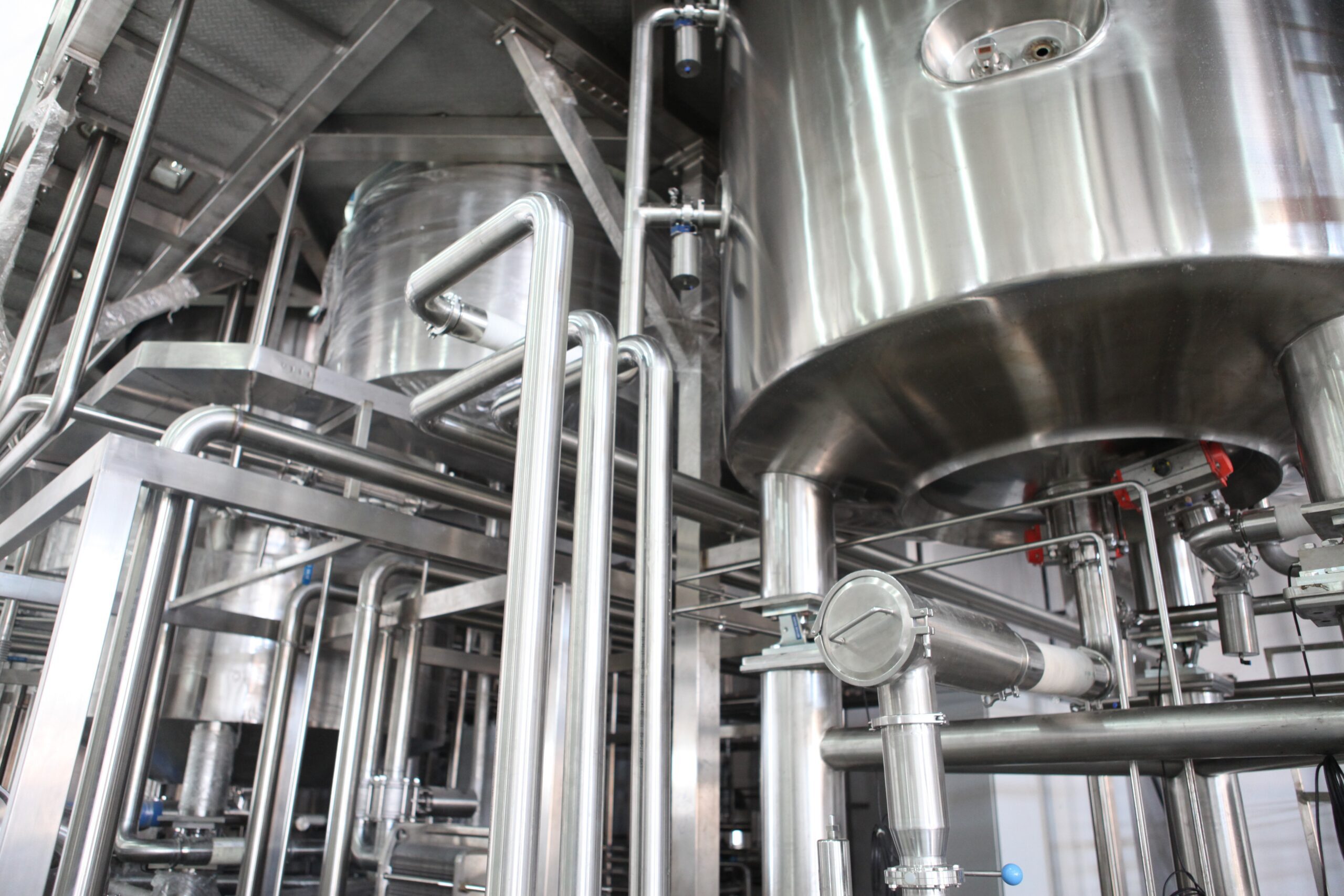In this article, I will discuss the importance of OSHA compliance in industrial workshops and its impact on safety and productivity. As an expert in workplace safety regulations and practices, I aim to provide a comprehensive overview of OSHA requirements and guidelines specific to industrial workshops. By adhering to these standards, employers can mitigate potential hazards, ensure the well-being of their employees, and ultimately enhance the overall efficiency and success of their workshop operations.
Understanding the Importance of OSHA Compliance
Operating an industrial workshop comes with inherent risks and potential hazards. It is crucial for employers and workers to prioritize safety in the workplace, and this is where the Occupational Safety and Health Administration (OSHA) comes into play. OSHA is a regulatory body that ensures workplace safety, and understanding its importance is paramount in creating a secure and healthy working environment.
Impact on Workers’ Safety
The foremost objective of OSHA compliance is to safeguard workers’ safety. By adhering to OSHA regulations, employers are legally obligated to provide a workplace that is free from recognized hazards. This includes identifying and addressing potential risks, implementing safety measures, and providing appropriate training and protective equipment. Compliance with OSHA standards significantly reduces the likelihood of workplace accidents, injuries, and fatalities, promoting the overall well-being of workers.
Legal Implications
Compliance with OSHA regulations is not just a matter of ethical responsibility; it is also a legal requirement. OSHA has established standards that employers must follow to ensure the safety and health of their employees. Failure to comply with these regulations can result in severe penalties and legal consequences. Employers can face citations, fines, and even criminal charges if negligence or willful violations are discovered during inspections or investigations. By maintaining OSHA compliance, employers can protect themselves from legal issues and maintain a positive reputation.
Effects on Business Operations
OSHA compliance extends beyond ensuring workers’ safety. It also impacts the overall functioning and profitability of a business. A safe and healthy work environment promotes employee productivity and reduces absenteeism caused by workplace injuries or illnesses. Compliance can also lead to decreased insurance premiums, as insurance providers look favorably upon companies that prioritize safety. Furthermore, businesses that prioritize OSHA compliance are often more attractive to potential clients and customers, as they demonstrate a commitment to workplace safety.
Major OSHA Regulatory Standards
To maintain OSHA compliance, it is essential to understand the major regulatory standards that pertain to different industries and sectors. OSHA categorizes these standards into three main areas: General Industry Standards, Specific Industry Regulations, and Construction Regulations.
General Industry Standards
General Industry Standards apply to a wide range of industrial sectors that are not specifically addressed by other OSHA standards. These standards cover various aspects of workplace safety, including hazard communication, electrical safety, machine guarding, and respiratory protection. It is crucial for employers to familiarize themselves with these standards and ensure their workplace is in compliance.
Specific Industry Regulations
Specific Industry Regulations are tailored to address the unique hazards and risks present in certain industries, such as healthcare, agriculture, and manufacturing. These standards provide sector-specific guidelines and requirements to protect workers in their respective fields. Compliance with specific industry regulations is essential to ensure the safety of workers facing industry-specific hazards.
Construction Regulations
Construction sites pose unique challenges and dangers, requiring distinct safety measures. OSHA’s Construction Regulations establish standards for construction sites, covering topics such as fall protection, scaffolding, excavation safety, and crane operations. Construction companies must strictly adhere to these regulations to prevent accidents and injuries common in their line of work.



This image is property of images.unsplash.com.
Role of Personal Protective Equipment (PPE)
Personal Protective Equipment (PPE) plays a vital role in ensuring workers’ safety by providing a physical barrier between employees and workplace hazards. Implementing effective PPE measures is crucial in maintaining OSHA compliance.
Selecting the Right PPE
Choosing the appropriate PPE for workers is a critical step in OSHA compliance. Employers must assess the specific hazards present in the workplace and provide the appropriate protective equipment. This may include safety glasses, hard hats, gloves, respirators, and protective clothing. The chosen PPE must meet OSHA’s standards and fit properly to provide maximum protection.
Ensuring Workers’ Adherence to PPE Use
Providing PPE is not enough; workers must also be educated on its proper usage and the importance of wearing it at all times when required. Employers should establish clear guidelines for PPE utilization, conduct regular training sessions, and reinforce the importance of compliance. Regular reminders and enforcement of PPE policies are crucial to ensure workers consistently adhere to PPE usage requirements.
Regular Inspection and Maintenance of PPE
PPE is not a one-time solution; it requires regular inspection and maintenance to remain effective. Employers should establish a system for inspecting PPE to ensure it is in good condition and functioning correctly. Any damaged or worn-out equipment should be promptly replaced. Additionally, regular training on proper maintenance techniques can help workers effectively care for their PPE, extending its lifespan and effectiveness.
Workplace Hazard Identification and Control
Identifying and controlling workplace hazards is a fundamental aspect of maintaining OSHA compliance. Employers should implement strategies to regularly assess and mitigate potential risks.
Regular Safety Inspections
Regular safety inspections should be conducted to identify workplace hazards and assess the effectiveness of existing safety measures. This includes inspecting equipment, machinery, work areas, and other potential sources of danger. Employers should implement a systematic inspection schedule and involve workers in the process to ensure all hazards are identified and addressed promptly.
Safety Training for Workers
Effective safety training programs are essential for creating awareness and empowering workers to recognize and respond to workplace hazards. Employers should provide comprehensive training covering topics such as hazard identification, emergency procedures, proper equipment usage, and safe work practices. Ongoing training should be provided to new employees and as a refresher for existing staff members to reinforce safety protocols.
Effective Hazard Communication
Open and effective communication channels are crucial for maintaining a safe working environment. Employers should implement a robust hazard communication program, which includes the labeling of hazardous substances, providing Safety Data Sheets (SDS), and educating workers on the potential risks associated with specific tasks or materials. Clear and concise communication helps workers understand and avoid potential hazards, reducing the likelihood of accidents and injuries.



This image is property of images.unsplash.com.
Recordkeeping and Reporting Requirements
Accurate recordkeeping and timely reporting of workplace injuries, illnesses, and accidents are critical for OSHA compliance. Employers must maintain proper documentation and adhere to specific reporting requirements.
Keeping Track of Workplace Injuries and Illnesses
Employers are required to maintain accurate records of all workplace injuries and illnesses. These records should include detailed information on the incident, the injured or affected employee, the medical treatment provided, and any time off work. Maintaining these records enables employers to proactively identify trends, implement necessary safety improvements, and fulfill OSHA reporting obligations.
Reporting Serious Accidents to OSHA
Certain workplace accidents, injuries, and fatalities must be reported to OSHA within a specified timeframe. Employers should familiarize themselves with OSHA’s reporting criteria and ensure compliance. Timely reporting of severe incidents allows OSHA to investigate and take appropriate actions to prevent future occurrences.
OSHA’s Recordkeeping Rule
OSHA’s Recordkeeping Rule outlines the requirements for maintaining and reporting workplace injury and illness records. Employers should be well-versed in this rule to avoid violations and penalties. Key elements of the Recordkeeping Rule include the classification of injuries and illnesses, maintaining a log of work-related incidents, and submitting necessary reports to OSHA.
Managing Health Risks and Exposure
In addition to physical hazards, employers must address health risks and exposure situations to maintain OSHA compliance. Understanding occupational exposure limits, implementing control strategies, and establishing health surveillance programs are vital in ensuring workers’ well-being.
Understand Occupational Exposure Limits
Occupational exposure limits (OELs) are the maximum concentrations of hazardous substances that workers can be exposed to without risking their health. Employers must be aware of the OELs relevant to their industry and ensure that exposure levels are consistently monitored and controlled below these limits. Regular testing and measurements should be conducted to evaluate workplace air quality and verify compliance.
Effective Control Strategies
Controlling health risks requires a comprehensive approach. Employers should implement engineering controls, administrative controls, and safe work practices to minimize exposure to hazardous substances. Engineering controls include modifying equipment and processes to reduce risks, such as implementing ventilation systems or enclosures. Administrative controls involve establishing procedures, policies, and training to minimize exposure. Safe work practices, such as proper hygiene and the use of personal protective equipment, also contribute to effective control strategies.
Health Surveillance Programs
Health surveillance programs play a crucial role in monitoring workers’ health and detecting early signs of potential health issues related to workplace exposure. Regular medical examinations, screenings, and monitoring protocols should be established based on the nature of the workplace hazards. These programs enable employers to detect and address health concerns promptly, ensuring workers’ continued well-being and compliance with OSHA standards.



This image is property of images.unsplash.com.
Safety Training and Education
Providing adequate safety training and education is essential for OSHA compliance. Properly educated employees are more likely to follow safety procedures, identify potential hazards, and respond effectively in emergency situations.
Importance of OSHA Training Programs
OSHA offers diverse training programs designed to educate workers and employers about workplace safety standards, regulations, and best practices. Participating in these programs provides valuable knowledge and skills necessary to maintain compliance, mitigate risks, and promote a culture of safety. Employers should prioritize OSHA training programs to ensure their workforce is equipped with the necessary expertise to effectively adhere to safety protocols.
Training for Staff Members
Providing comprehensive safety training to all staff members is crucial in maintaining OSHA compliance. Training should cover general safety procedures, emergency response protocols, proper use of equipment and machinery, hazard identification, and reporting procedures. Regular refresher training sessions should be conducted to reinforce safety knowledge and update employees on any new regulations or practices.
Training for Supervisors and Management
In addition to staff members, supervisors and management play a central role in ensuring workplace safety and OSHA compliance. Providing specific training for supervisors and managers equips them to effectively oversee safety protocols, enforce policies, and recognize potential risks. Such training should focus on leadership skills, hazard identification, incident investigation techniques, and employee engagement in safety efforts. By investing in comprehensive training for supervisors, businesses can create a culture of safety and maintain OSHA compliance more effectively.
Workplace Emergency Planning and Response
Emergency situations can occur unexpectedly in any workplace. Preparedness and effective response are key to minimizing risks to workers’ safety. Developing an Emergency Action Plan, training workers on emergency procedures, and regularly testing and evaluating plans are vital components of OSHA compliance.
Developing an Emergency Action Plan
An Emergency Action Plan (EAP) outlines procedures and protocols to be followed in the event of an emergency, such as fires, natural disasters, or chemical spills. Employers should develop a customized EAP that addresses specific risks present in their workplace. The EAP should clearly define evacuation routes, assembly points, emergency contacts, communication methods, and the roles and responsibilities of employees during emergencies. Regular updates and communication of the EAP are crucial to ensuring workers are prepared and aware of proper emergency procedures.
Training Workers on Emergency Procedures
Employees must receive comprehensive training on emergency procedures to effectively respond and protect themselves in crisis situations. Training should cover evacuation techniques, communication procedures, emergency exits, location of emergency equipment, and any specific actions required for different types of emergencies. Regular drills and exercises should be conducted to reinforce training and identify areas for improvement.
Regular Testing and Evaluation of Plans
Emergency plans must be regularly tested, evaluated, and updated to maintain their effectiveness. Employers should conduct mock drills and scenarios to assess the response time, efficiency of evacuation, and the overall effectiveness of the emergency plan. Feedback from employees and lessons learned from each test should be used to refine the plan and address any shortcomings. Regular evaluation ensures that emergency plans remain up-to-date, relevant, and compliant with OSHA standards.
Managing Ergonomic Issues
Ergonomic issues, such as musculoskeletal disorders and repetitive strain injuries, are prevalent in many industrial workplaces. Employers must actively address ergonomic risks to protect workers from long-term health issues and maintain OSHA compliance.
Identifying Ergonomic Risks
Employers should conduct ergonomic assessments to identify potential risks associated with work tasks, equipment, and workstation design. This may include evaluating repetitive motions, awkward postures, heavy lifting, or inadequate seating and lighting arrangements. Identifying ergonomic risks enables employers to take proactive measures to mitigate these risks and provide a safer working environment.
Implementing Controls
Controlling ergonomic risks involves implementing strategies and modifications to reduce the likelihood of musculoskeletal disorders and other related injuries. Engineering controls, such as adjustable workstations and ergonomically designed equipment, can contribute to better ergonomics. Administrative controls involve job rotation, task variation, and the provision of regular breaks to minimize prolonged exposure to ergonomic risk factors. Additionally, offering ergonomic training and promoting proper lifting techniques can help employees better manage ergonomic hazards.
Training Workers on Ergonomics
Educating workers about ergonomic principles and practices is essential in preventing ergonomic injuries and maintaining OSHA compliance. Employers should provide ergonomic training sessions and resources to inform employees about the importance of proper posture, body mechanics, and the use of ergonomic equipment. Training should also emphasize the early recognition of symptoms associated with musculoskeletal disorders, encouraging employees to report discomfort or pain promptly.
Implementing an Effective Safety Culture
Creating a strong safety culture is crucial for long-term OSHA compliance. It involves fostering a mindset in which safety is integral to daily operations, and every employee assumes responsibility for their safety and the safety of others.
Role of Leadership
Leadership plays a pivotal role in establishing and nurturing a safety culture. Executives, supervisors, and managers should lead by example, demonstrating their commitment to safety and prioritizing it in decision-making processes. Effective leadership involves clear communication of safety expectations, providing necessary resources, and promoting open dialogue about safety concerns. By embracing safety as a core value, leaders can influence the behaviors and attitudes of employees, fostering a culture of safety throughout the workplace.
Incorporating Safety into Daily Operations
Safety should be seamlessly integrated into daily operations and work processes. Employers should establish safety protocols that are robust, easily accessible, and actively communicated. This includes regular safety meetings, toolbox talks, and incorporating safety discussions into pre-shift meetings or project planning sessions. By embedding safety practices into routine activities, employers can reinforce the importance of safety and create an environment where employees prioritize safe working habits.
Regular Safety Audits
Conducting regular safety audits is crucial for evaluating the effectiveness of safety measures and identifying areas that require improvement. Employers should establish a systematic approach to conducting safety audits, reviewing safety policies and procedures, and inspecting work areas and equipment. Feedback from employees and any safety concerns raised should be addressed promptly. A comprehensive safety audit helps employers identify gaps, assess compliance with OSHA regulations, and implement necessary corrective actions.
In conclusion, understanding and adhering to OSHA compliance is paramount for maintaining a safe and healthy workplace in an industrial workshop. From ensuring workers’ safety and obedience to legal requirements to effectively managing workplace hazards and promoting a culture of safety, OSHA compliance is a comprehensive undertaking that demands dedication and commitment from employers. By prioritizing safety, implementing effective control measures, and providing adequate training and resources, employers can not only maintain compliance but also protect the well-being of their workers and enhance the overall efficiency of their business operations.
